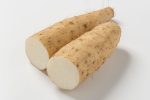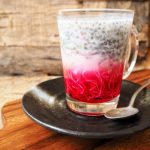
Anybody involved in trying to identify an off-note, a strange smell or something quite objectionable in a food or drink must consider what methods are available to do so. I know that detecting off-flavours in food and drinks can be a complex process, as these may originate from a variety of sources. I would include microbial contamination, chemical reactions, or ingredient degradation as the main culprits. You can also include taints picked up from packaging, from process equipment and from human beings! In the first instance, it is a human interaction with the off-note which becomes the first alert that something is wrong with a food. Fortunately, several analytical methods are used to identify and quantify any undesirable compounds (Saxby, 1996; Ridgway et al., 2010). I’ve listed commonly used techniques that I’ve found valuable:
1. Gas Chromatography (GC)
- Purpose: GC is widely used to separate and identify volatile compounds responsible for off-flavours.
- How it works: The volatile components are vaporized and passed through a column, where they are separated based on their interactions with the column material. A detector, often a mass spectrometer (GC-MS), identifies the separated compounds.
- Applications: Useful for detecting aldehydes, ketones, alcohols, and sulphur-containing compounds, which often contribute to off-flavours.
2. High-Performance Liquid Chromatography (HPLC)
- Purpose: HPLC is used for separating and detecting non-volatile or less volatile compounds in food that may contribute to off-flavours.
- How it works: Samples are dissolved in a liquid and passed through a column under high pressure, where compounds are separated and detected by various detectors such as UV, fluorescence, or mass spectrometry (LC-MS).
- Applications: Useful for identifying off-flavours from phenols, organic acids, and other water-soluble compounds.
3. Sensory Evaluation (Sensory Panels)
- Purpose: This is a human-based method where trained sensory panelists detect and describe off-flavours through tasting or smelling. You don’t use if there is any risk to life!
- How it works: Sensory panelists are trained to recognize specific off-flavours, and their feedback can be correlated with analytical data.
- Applications: Commonly used in the beverage industry (e.g., wine, beer) and food industry (e.g., dairy products, snacks).
4. Solid-Phase Microextraction (SPME)
- Purpose: SPME is often used in conjunction with GC or GC-MS to extract volatile compounds from complex food matrices.
- How it works: A fiber coated with a specific absorbent is exposed to the sample, absorbing volatile compounds, which are then desorbed in the GC injector for analysis.
- Applications: Used to detect off-flavours in beverages, oils, and processed foods.
5. Nuclear Magnetic Resonance (NMR) Spectroscopy
- Purpose: NMR is used to detect and quantify various molecular structures, including off-flavour compounds.
- How it works: It provides detailed information about the molecular structure by measuring the interaction of nuclei with a magnetic field.
- Applications: Effective for identifying the molecular sources of off-flavours, particularly in fermented or processed products.
6. Fourier Transform Infrared (FTIR) Spectroscopy
- Purpose: FTIR is used to identify functional groups in compounds that may be responsible for off-flavours.
- How it works: Infrared radiation is passed through the sample, and the absorption of light at specific wavelengths corresponds to different molecular vibrations, indicating specific functional groups.
- Applications: Useful in dairy, meat, and plant-based products for detecting lipid oxidation and protein degradation.
7. Electronic Nose (E-Nose)
- Purpose: The electronic nose mimics the human olfactory system and can detect volatile organic compounds associated with off-flavours (Ragazzo-Sanchez et al., 2009).
- How it works: Sensors in the e-nose react to volatile compounds in the sample, generating a unique fingerprint that can be analyzed.
- Applications: Often used for quality control in beverages, dairy products, and snacks.
8. Headspace Analysis
- Purpose: This is a technique for analyzing volatile compounds present in the headspace (the air above the sample).
- How it works: The headspace vapors are sampled and analyzed using GC or other techniques.
- Applications: Useful for identifying off-flavours in packaged products, fermented foods, and beverages.
9. Mass Spectrometry (MS)
- Purpose: MS is often combined with other separation techniques (e.g., GC-MS, LC-MS) to detect off-flavours at very low concentrations.
- How it works: After separation, molecules are ionized, and their mass-to-charge ratios are measured to identify specific compounds.
- Applications: Highly sensitive for detecting trace amounts of contaminants, oxidation products, or spoilage compounds.
10. Ion Chromatography (IC)
- Purpose: IC is used to analyze ionic compounds in food and beverages, which can contribute to off-flavours.
- How it works: Samples are passed through a column, and the ionic compounds are separated and detected.
- Applications: Useful for detecting unwanted salts or acids that cause off-flavours, particularly in beverages.
11. Enzyme-Linked Immunosorbent Assay (ELISA)
- Purpose: ELISA is used to detect specific proteins or compounds that could lead to off-flavours.
- How it works: It uses antibodies to bind specific molecules, producing a detectable signal.
- Applications: Used in cases where off-flavours are caused by microbial contamination or allergens.
These methods, often used in combination, provide a comprehensive approach to detecting and identifying off-flavours in various food and drink products.
References
Ragazzo-Sanchez, J. A., Chalier, P., Chevalier-Lucia, D., Calderon-Santoyo, M., & Ghommidh, C. (2009). Off-flavours detection in alcoholic beverages by electronic nose coupled to GC. Sensors and Actuators B: Chemical, 140(1), pp. 29-34.
Ridgway, K., Lalljie, S. P., & Smith, R. M. (2010). Analysis of food taints and off-flavours: a review. Food Additives and Contaminants. 27(2), pp. 146-168 (Article)
Saxby, M. J. (Ed.). (1996). Food Taints and Off-Flavours. Springer Science & Business Media.


Leave a Reply